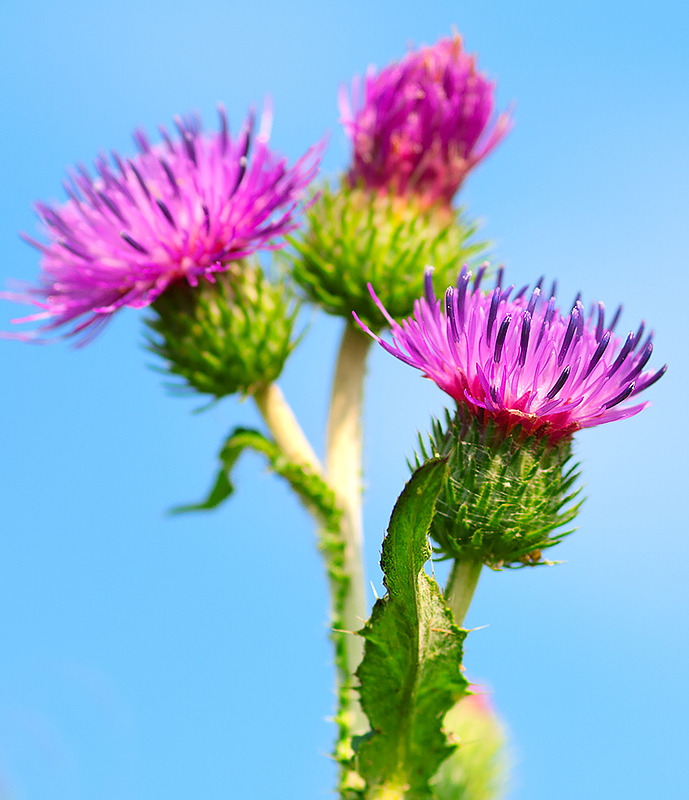Weed is any plant that grows where people do not want it to grow. A plant may be considered a weed in one place but not in another. For example, a morningglory in an alfalfa field is a weed pest, but a morningglory in a garden is a lovely flower. Some plants, such as poison ivy and poison oak, are called weeds wherever they grow because they have no known use.
Many weeds are destructive. These species reduce both the quality and quantity of crops by competing with them for sunlight, water, and nourishing substances in the soil. Some types of weeds also shelter insects and diseases that damage nearby crops. Farmers in the United States spend more than $8 billion annually to control weeds. Nevertheless, the yearly loss due to weeds in crops totals about $10 billion. Weeds are usually considered unsightly in gardens, parks, and playgrounds. They interfere with transportation if allowed to grow unchecked along highways, railroad tracks, and waterways.

Some kinds of weeds, such as jimson weed and locoweed, are poisonous to human beings and other animals. Certain weeds, including nettles and poison ivy, produce severe skin reactions in most people. Ragweed pollen causes hay fever in many individuals.
Weeds can be beneficial in some cases. For example, they reduce soil erosion on land where cultivated plants do not grow. They also provide shelter and food for birds and other wildlife. A weed, such as quackgrass, may serve as food for livestock if other food is not available. People in some countries eat parts of dandelions, lamb’s-quarters, and other weeds. Fireweed, one of many weeds used in making certain medicines, helps relieve pain. Other weeds, such as goldenrod and wild carrot, are attractive in gardens.
How weeds grow.
Weeds are classified as annuals, biennials, and perennials, depending on how long they live. Annual weeds grow from seeds and live one year or less. There are two kinds of annual weeds, summer annuals and winter annuals. Summer annuals start to grow in spring and produce seeds before dying in fall. Winter annuals begin to grow in fall and produce roots and a group of leaves, called a rosette, before winter. The plant then remains inactive until spring, when it grows to maturity. Common annual weeds include crabgrass, dodder, and ragweed.
Biennial weeds grow from seeds and live about two years. They produce roots and a rosette during the first year and then remain inactive until spring. Biennials produce stems, flowers, and seeds during the second year. Examples of biennial weeds include burdock, poison hemlock, and wild parsnip.
Perennial weeds, which live longer than two years, grow from seeds or from other parts of a plant. New growth may start from the roots, bulbs, or stems if the upper part of a plant dies or is cut down. Most perennials are difficult to control because they have extremely deep root systems. Canada thistle, dandelion, and quackgrass are common perennial weeds.
Weeds may spread from one area to another in a variety of ways. Many weed seeds have special structures that enable them to travel great distances on wind currents. For example, the dandelion has a fluffy seed structure that can be blown for miles. Birds and other animals also scatter seeds of weeds. People spread weeds by means of seeds caught on farm and lawn equipment. In addition, weed seeds may be moved from one place to another in animal feed and among crop seeds.
Weed control.
There are four general methods of weed control–cultural, mechanical, biological, and chemical. Cultural control is the use of efficient crop production to prevent weeds from growing. One such technique involves planting crop seeds that are free of weed seeds. Crop rotation helps keep weeds from adapting to a certain area. In small areas, a covering called a mulch is placed on the ground around plants to prevent weed growth. Common types of mulches include grass clippings, wood chips, and plastic sheets. See Mulch .
Mechanical control is the destruction of weeds manually or by machine. Farmers use a machine called a cultivator to dig up large weeds and cover smaller ones with soil. Tall weeds in pastures and on roadsides are controlled by mowing. Hoeing weeds or pulling them out of the ground by hand can be effective in small gardens, flower beds, and lawns.
Biological control involves the use of natural enemies of weeds growing in a specific area. For example, insects and other small animals that eat certain weeds may be put into a field where those weeds are growing. Bacteria and other organisms are used to spread diseases among specific species of weeds.
Chemical control is the use of chemical compounds called herbicides. Most herbicides are selective–that is, they kill weeds but do not harm crops. Herbicides must be used carefully to avoid harm to crops, human beings, and wildlife.
